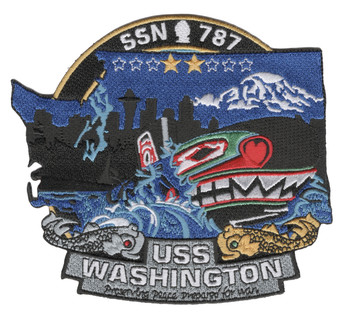Description
SUBMARINE SSN-597 USS TULLIBEE USS Tullibee (SSN-597), a unique submarine, was the second ship of the United States to be named for the tullibee, any of several whitefishes of central and northern North America. Tullibee was the result of "Project Nobska", a study ordered in 1956 by Admiral Arleigh Burke, then Chief of Naval Operations, from the Committee on Undersea Warfare of the National Academy of Sciences. That report emphasized the need for deeper-diving, ultraquiet submarine designs using long-range sonar. Tullibee incorporated three design changes based on Project Nobska. First, it incorporated the first bow-mounted spherical sonar array. This required the second innovation: amidships, angled torpedo tubes. Thirdly, Tullibee was propelled by a very quiet turboelectric power plant based on the S2C reactor. The contract to build Tullibee was awarded to the Electric Boat Division of the General Dynamics Corporation on November 15, 1957. Her keel was laid down in Groton, Connecticut, on 26 May 1958. She was launched on 27 April 1960 sponsored by Mrs. John F. Davidson, the widow of Commander Charles F. Brindupke, and commissioned on 9 November 1960 with Commander Richard E. Jortberg in command. Following her shakedown in January 1961, Tullibee engaged in sonar evaluations and nuclear submarine tactical exercises with Submarine Developmental Group 2, operating out of New London, Connecticut, into 1963. During this period, the ship visited Bermuda on several occasions, as well as San Juan, Puerto Rico. In July 1964, Tullibee participated in fleet exercises in antisubmarine warfare (ASW) tactics with NATO units. The submarine resumed developmental work in 1965 and operated in this capacity into the fall of that year. On 28 October, her home port was temporarily changed to Portsmouth, New Hampshire, when the ship entered the Portsmouth Naval Shipyard in Kittery, Maine, for an extensive overhaul. She remained in drydock for 754 days, emerging on 2 January 1968. Shifted back to New London, Tullibee deployed to the Caribbean Sea in January 1969 following refresher training and continued developmental work during 1969 and 1970. On 1 August 1970, Tullibee departed New London, bound for the Mediterranean and the ship's first service with the Sixth Fleet. During this period, she took part in NATO and Sixth Fleet exercises and made port visits to Athens, Greece; Naples, Italy and Rota, Spain, before returning to New London on 14 December, having travelled some 20,000 miles in 135 days. In early 1971, the submarine returned to developmental exercises once more to work on SSN tactics and also made a port visit to Cape Canaveral, Florida. Participating in a major NATO exercise in the western Atlantic, Tullibee visited Halifax, Nova Scotia, before she received the Meritorious Unit Commendation for her contingency operations in the Mediterranean Sea during the previous year (from 9 September to 31 October 1970). For the remainder of the year 1971, Tullibee operated in the western Atlantic on NATO and ASW exercises. During this period, too, Tullibee received the Arleigh Burke Fleet Trophy for significant improvement in the ship's battle efficiency and readiness for that fiscal year. The submarine conducted regular operations with the Atlantic Fleet Submarine Force into 1974, operating off the east coast and in the Caribbean Sea. Following one Caribbean cruise in the fall of 1974, Tullibee departed New London on 28 April 1975 for her second deployment to the Sixth Fleet. After operating in the Mediterranean into the fall of that year, the submarine returned to New London in October for an extended period of upkeep. Tullibee subsequently participated in sonar evaluation tests with British destroyer HMS Matapan (D-43) in the Caribbean Sea in two separate deployments between April and June 1976, before undergoing another extended upkeep period. The submarine conducted ASW operations and local operations into the fall of 1976, before she departed New London on 12 November for her third Mediterranean deployment. After serving in the Sixth Fleet into the spring of 1977, she returned to her home port on 24 April. During the remainder of the year, Tullibee underwent three upkeep periods interspersed with ASW exercises off the east coast of the United States. The early months of 1978 were spent in preparation for her fourth Mediterranean deployment. Departing New London in March, the submarine conducted operations with various units of the Sixth Fleet. The deployment was marred somewhat by a propulsion casualty which necessitated a two-month repair period spent at Rota, Spain. Tullibee returned to New London on 30 August. Operations out of that port took Tullibee into 1979. Tullibee received a Meritorious Unit Commendation for her service with the Sixth Fleet. Decommissioned and stricken from the Naval Vessel Register on 18 June 1988, ex-Tullibee entered the Navy's Nuclear Powered Ship and Submarine Recycling Program on 5 January 1995. On 1 April 1996, the hulk had ceased to exist. See USS Tullibee for other ships of the same name.
View AllClose


















